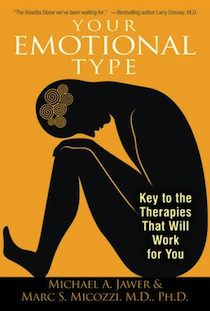I have decided to dedicate a post on Thursday to therapy, and offer you the many tips I have learned on the couch. They will be a good reminder for me, as well, of something small I can concentrate on. Many of them are published in my book, “The Pocket Therapist: An Emotional Survival Kit.”
In a recent New York Times piece, writer Benedict Carey refers to tears as “emotional perspiration.” As an easy crier who sweats a lot, that makes perfect sense. But I’m not ashamed to cry because tears heal in a variety of different ways.
For one, they remove toxins from our body. Emotional tears (those formed in distress or grief) contain more toxic byproducts than tears of irritation, like when you peel an onion, indicating that weeping is surely nature’s way of cleansing the heart and mind.
Second, tears elevate mood. Crying lowers a person’s manganese level, and the lower the better because overexposure to manganese (whatever it is) can cause anxiety, nervousness, irritability, fatigue, aggression, and the rest of what happens in your brain when you or your spouse are in a foul mood.
Finally, crying is cathartic.
You’ve felt the same release that I have after a good sob, right?
It’s as if your body has been accumulating hurts and resentments and fears over the period of a year, a month, a week, or a half-second … until your limbic system runs out of room and then, like a volcano, the toxic gunk spews forth everywhere … onto your sweater, or a friend’s sweater, or onto a Kleenex, if you’re lucky enough to catch them.
That’s good! Because the cardiovascular and nervous systems run more smoothly after some emotional perspiration.

